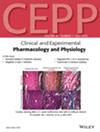Diclofenac Enhances the Response of BRAF Inhibitor to Melanoma Through ROS/p38/p53 Signaling
Abstract
BRAF inhibitors (BRAFi) represent a cornerstone in melanoma therapy due to their high efficacy. However, the emergence of resistance causes a significant challenge to their clinical utility. This study aims to investigate the potential of diclofenac as a sensitizer for BRAFi therapy in melanoma and to elucidate its underlying mechanism. BRAFi-acquired resistant melanoma cell lines SK-MEL-5R and A375R were established and treated with diclofenac in combination with BRAFi PLX4032. Cell viability was assessed using the MTT assay, cell proliferation was determined by crystal violet staining, cell apoptosis was evaluated by flow cytometry, and intracellular ROS levels were measured using the DCFH-DA probe-labeled and flow cytometry. Mitochondrial membrane potential was assessed by JC-1 staining and flow cytometry, and protein expression levels were detected by western blotting. Our results demonstrated that diclofenac significantly augmented the cytotoxicity of PLX4032 and enhanced its ability to induce apoptosis in SK-MEL-5R and A375R cells. Diclofenac treatment led to the release of intracellular reactive oxygen species (ROS), consequently reducing transmembrane potential, promoting mitochondrial apoptosis, and activating the ROS downstream p38/p53 signaling pathway. Pretreatment with N-acetylcysteine significantly reversed the sensitizing effect of diclofenac on PLX4032 in SK-MEL-5R cells. These findings suggested that diclofenac sensitized BRAFi-resistant melanoma cells to BRAFi by increasing ROS release and activating p38/p53 signaling pathway. Diclofenac might serve as a promising adjunct therapy to overcome BRAFi resistance in melanoma treatment.

 求助内容:
求助内容: 应助结果提醒方式:
应助结果提醒方式:


